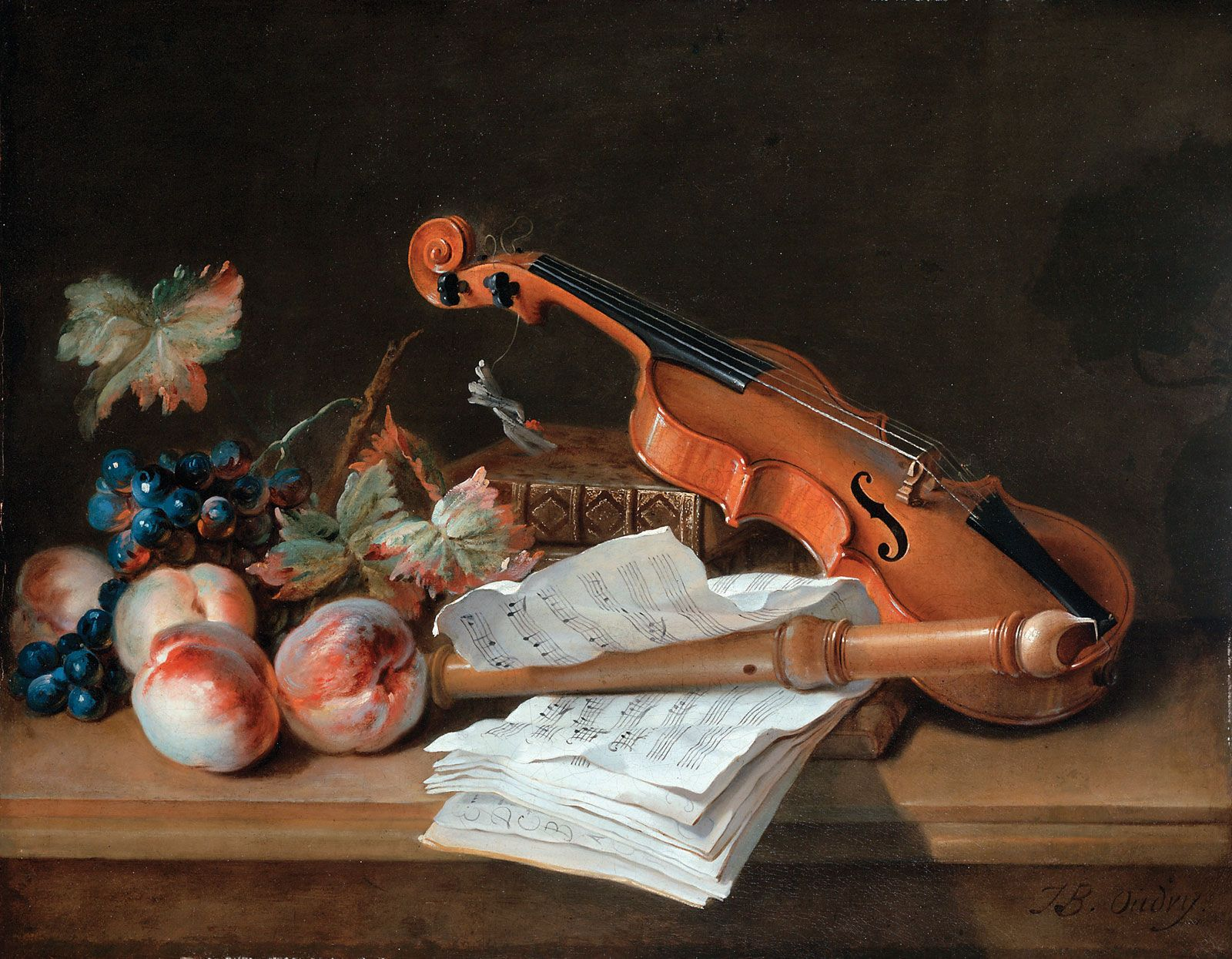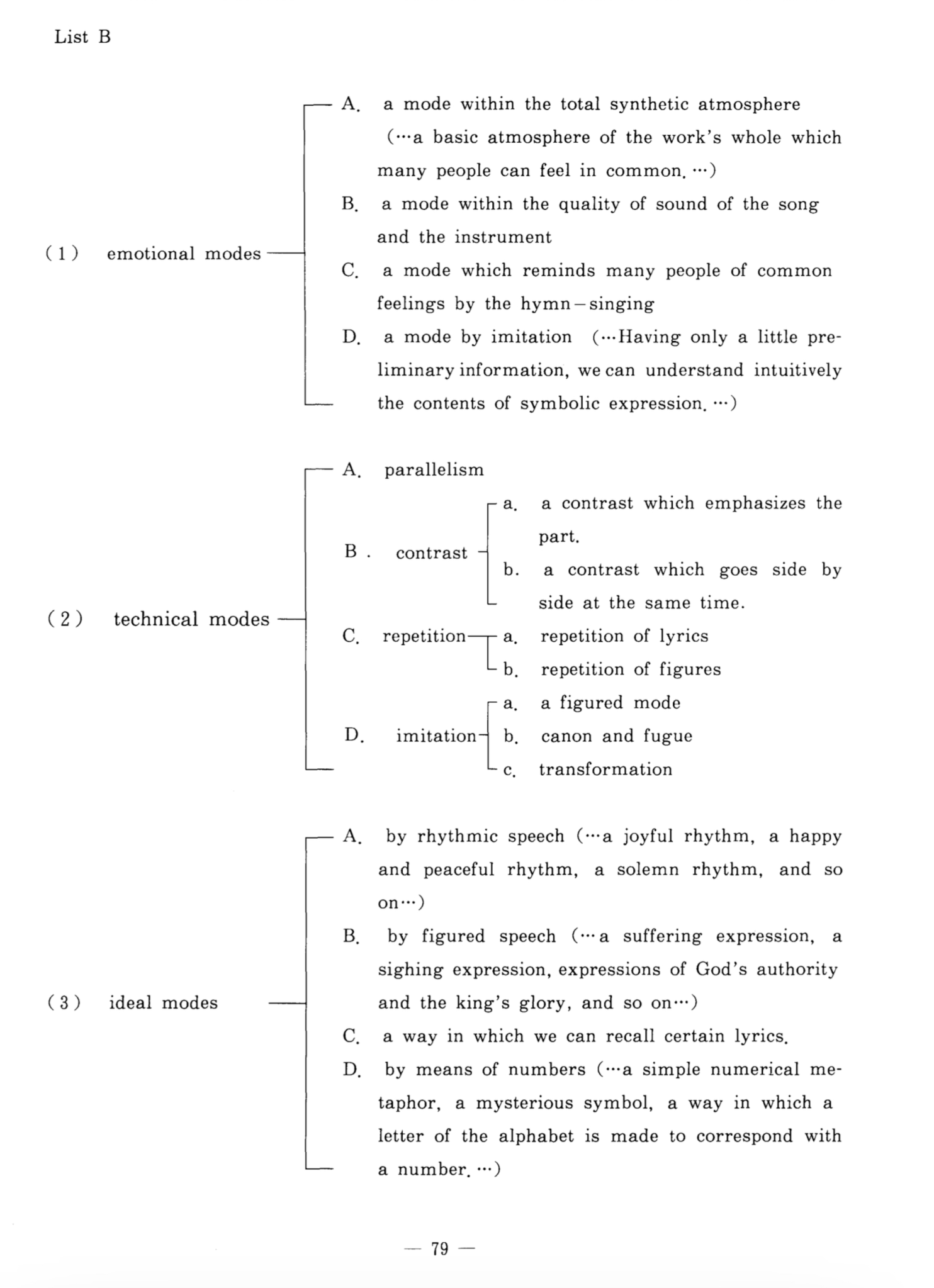back to Table of contents
A research question:
In what way J.S. Bach has included his idea of allegory and symbolism in his Sei Solo, Six Solo Violin Sonatas?
Could this be indicating if there is a consecutive story behind Sei Solo?
Possible sub-questions:
How did Bach connect symbolism to his ornamentation, tonality, and numerical values etc.?
What are the messages behind in his Sei Solo and how could we rhetorically convey them to the listeners?
In the course of my research, I encountered significant difficulty in finding adequate sources to develop my ideas. For instance, I came across motifs such as the sadness motif—an ascending minor sixth followed by a descending semitone—and the sigh motif, characterized by two descending semitones in a single slur... to name a few. Yet, I was unable to locate specific sources that reference these motifs from Bach's time. My goal was to explore the common understanding of Allegory and Symbolism in Europe during Bach's time and earlier, but locating relevant references was challenging.
Despite the lack of direct written evidence from the time, I continue to trust my professors' insights and will place considerable emphasis on incorporating their ideas as a foundational element of my research.
It would have been ideal to find vocal pieces featuring the violin from around 1720, as this would have allowed me to explore and compare the rhetorical messages conveyed in those works with the narrative and expressive qualities found in the Sei Solo.
However, around that time, while Bach was working in Köthen, he was focused almost exclusively on instrumental music. The court in Köthen was Calvinist and did not require elaborate vocal music for worship, which led Bach to concentrate on composing works like the Six Sonatas and Partitas for Solo Violin BWV 1001-1006, Six Suites for Violoncello Solo BWV 1007-1012, and other instrumental pieces such as the Six Brandenburg Concertos BWV 1046-1051 ("some were even composed in Weimar, before Bach's time in Köthen," says Peter Bergquist), Six Sonatas for Violin and Harpsichord BWV 1014-1019, and the other Bach chamber pieces (BWV 1020-1040, involves music whose authenticity and dating are still debated, ranging from Weimar to his second son Carl Philipp Emanuel works: accompanied Violin works BWV 1020-26, Sonatas for Viola da Gamba and Harpsichord BWV1027-1029 (composed in Leipzig?), Partita in A minor for solo flute BWV 1013, Six Flute Sonatas BWV 1030-1035); and Trio sonatas BWV 1036-1040). 1
Although he might have revised some earlier vocal works or composed a few secular cantatas for court occasions, there is no substantial evidence of major new vocal compositions from that period. Most of Bach’s significant vocal works, such as his cantatas and passions, were composed later during his Leipzig years, starting in 1723. These challenges have deepened my curiosity to uncover the hidden meanings in Bach’s instrumental music, and I look forward to sharing this journey with you.
Methods:
Keiichi Kataoka, a specialist in musicology of J.S.Bach and Professor Emeritus of Tokushima University has published numerous interesting researches about Symbolic expressions in J.S. Bach's music.2 One of his publication, he describes ”In reflecting critically on the previously mentioned stage divisions from the perspective of idee concrète, I honestly found myself at a loss for how to structure my argument logically. However, if I must approach it in some way, —even if it is somewhat clumsy— I felt the only realistic way to approach was to follow the order of the stages, examine each element of the step by step, and ultimately organise the results of my analysis in the final stage.”3
Prof. Kataoka revised his research plan (List B below) seeking a broader aesthetic perspective from his previous studies of symbolic expression in Bach’s Mühlhausen vocal pieces—illustrated by his 1987 study of Cantata No. 196, initially classified the concrete methods of symbolic expression based on A. Schering(1877-1941)’s theory. The revised method, underpinned by his interpretation of idee concrète, frames emotion through psychological rather than spiritual lenses, emphasizing the musical Gestalt.
I would like to base my method on Prof. Kataoka's revised list as a reference, which is outlined below:
I will set aside the discussion of vocal music, but with reference to this list, I present my remarks on how to elaborate my research on these three columns:
By structuring my analysis in this way, I aim to provide a comprehensive understanding of how these different layers and elements interact within Bach's Sei Solo.
Regarding allegory and symbolism, the central focus of my research, I had the opportunity to ask Ton Koopman about this topic during his academy last month. His advice was direct: "I would suggest you look into paintings."
From the outset of my research, I have hoped to uncover connections between allegory and symbolism also in visual art and their counterparts in music. However, when it comes to Bach’s compositions, establishing such links seems particularly challenging. That said, my interest in iconography remains strong, and I have explored this field through two insightful books—one by Matilde Battistini4 and another by Matthew Wilson5.
Despite the difficulty of drawing direct parallels, I am eager to integrate these studies into my analysis of Bach’s Sei Solo.
In this research, I have chosen the Adagio and Fuga from Sonata No. 1, BWV 1001 as my primary case study. However, my ultimate goal is to expand this study to encompass the entire Sei Solo collection, allowing for a deeper exploration of Bach’s use of Allegory and Symbolism throughout these works.
_______________
1https://www.bach-cantatas.com/Topics/Kothen-Apprentice.htm, last visited 25th Februry, 2025.
2http://pub2.db.tokushima-u.ac.jp/ERD/person/60530/work-ja.html, last visited 25th Februry, 2025.
3Keiichi Kataoka, On Symbolic Expression of J.S. Bach's Works - Reflective Examination and Investigation from the Aesthetic Viewpoint about a Tentative Plan of its Phasic Classification - continued (Tokushima, University of Tokushima, 1995), p.79.
4Matthew Wilson, The Hidden Language of Symbols (Thomas & Hudson, 2022)
5Matilde Battistini, Symbols and Allegories in Art, Translated by Stephen Sartarelli (Los Angeles, The J. Paul Getty Museum, 2005)
Next: Chapter I. "Sei Solo"
back to Table of contents

